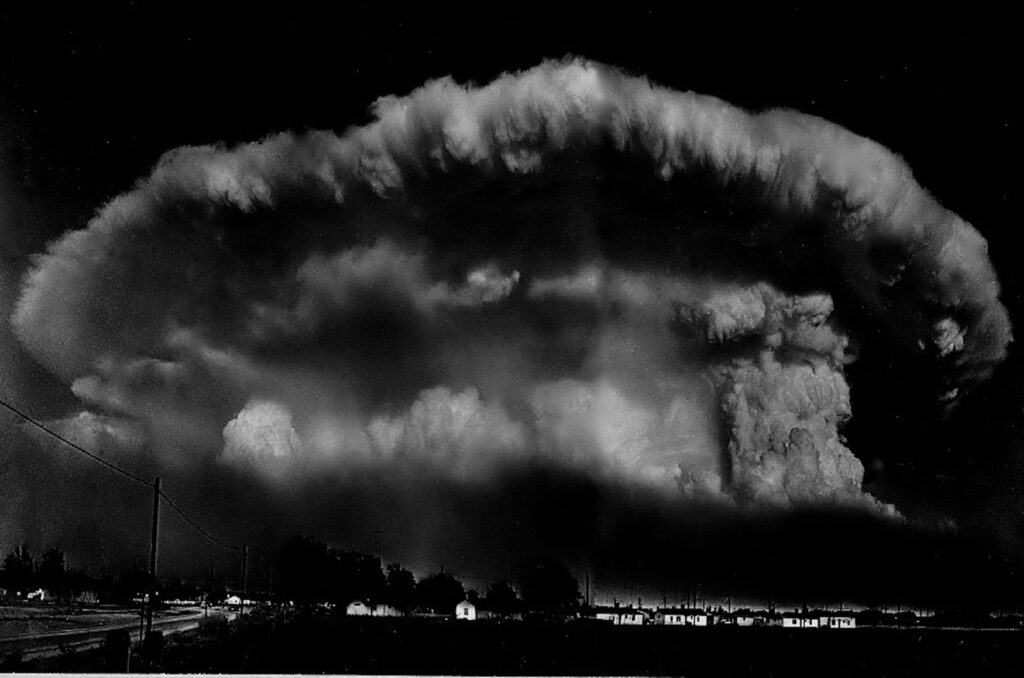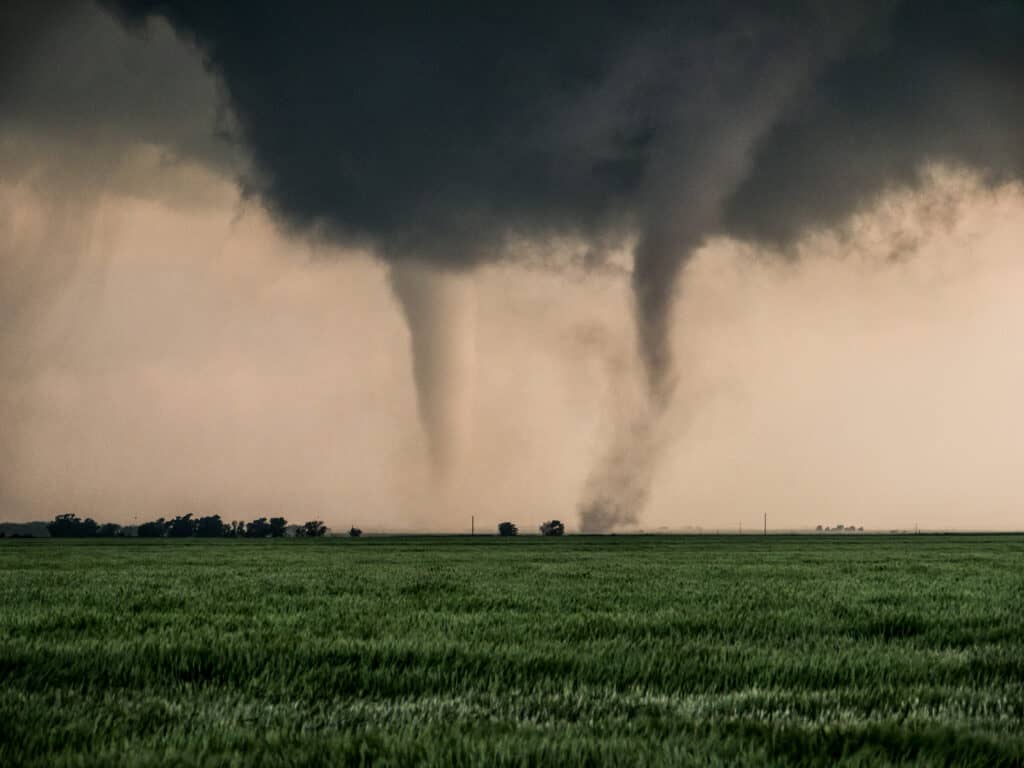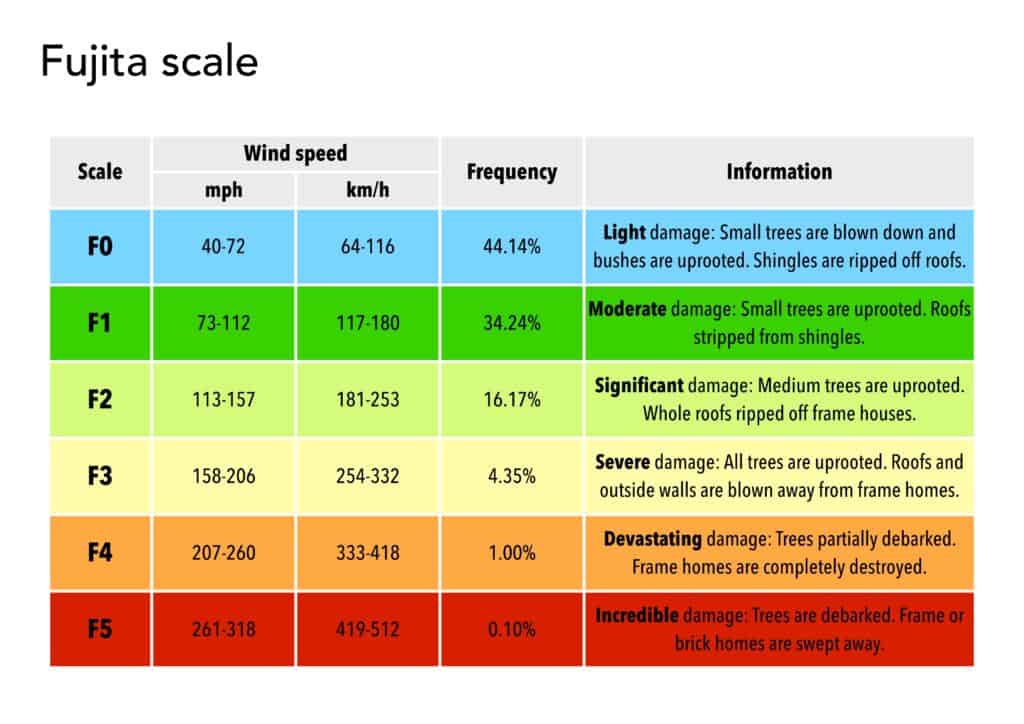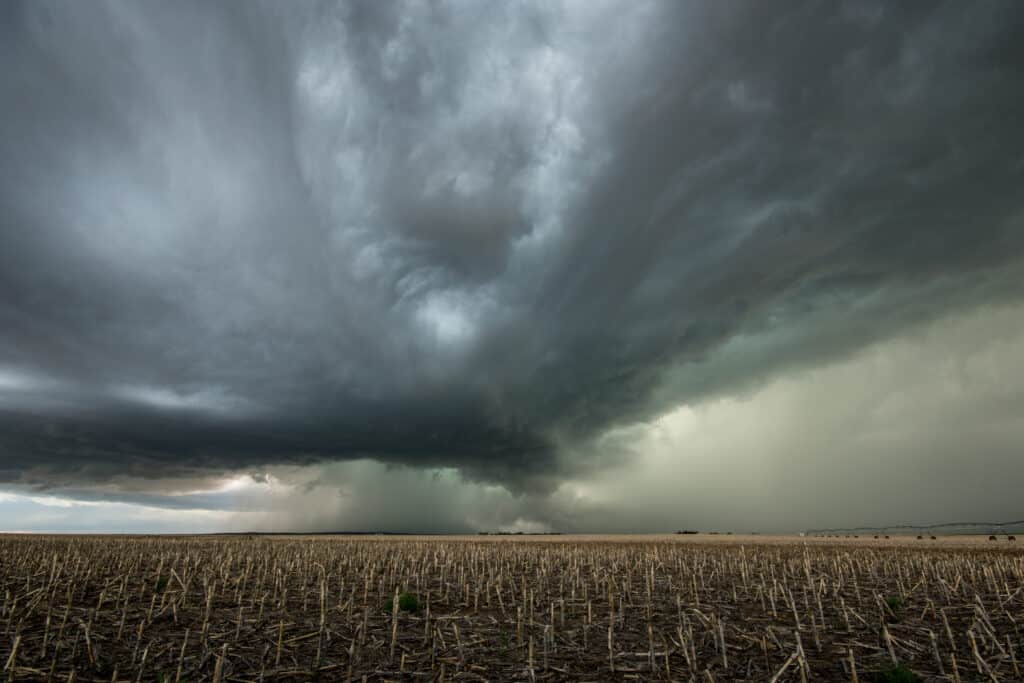A section of air that breaks away from a thunderstorm and rotates erratically just before it reaches the ground is known as a tornado. It is difficult to see if it does not create a condensation funnel out of the dust, debris, and water droplets. When it comes to storms in the atmosphere, tornadoes have the potential to be among the most destructive.
They are capable of leaving in their wake both destruction and fear. The United States of America takes the top spot as the country that has experienced the most tornadoes in the world. Every year, there are approximately 1,200 tornadoes on record throughout the United States. What kind of damage has been done because Texas is located in the middle of Tornado Alley? You’ll understand how much destruction it’s capable of wreaking, as well as some of the most devastating tornadoes to ever strike Texas.
Lubbock Tornado
On May 11, 1970, a powerful multiple-vortex tornado hit parts of Lubbock, Texas, after dark. It killed 26 people and caused at least $135 million in damage. It caused damage to nearly 9,000 homes, businesses, high-rise buildings, and public infrastructure. Meteorologist Ted Fujita looked at the tornado’s damage in what researcher Thomas P. Grazulis called “the most detailed mapping of a single tornado’s path ever done up to that point.”
Fujita’s scale for rating tornadoes, which he named after himself and first used in 1971, gave an F5 rating to the worst damage. The damage was terrible, and it took a lot of force to move heavy things around as much as was seen. This suggests that the winds created by the tornado’s vortices may have been as fast as 290 mph (470 km/h). Even though the sky was clear, dry, and sunny in Lubbock on May 11, a dry line moving to the west brought moist air into West Texas.
This meant that thunderstorms could happen. There were storms in the Lubbock area around 6:30 PM. At least two tornadoes formed before the primary F5 tornado, and one of them moved through parts of eastern Lubbock. The primary F5 tornado hit southwestern Lubbock at 9:35 PM. In the next half hour, it destroyed about a quarter of the city along an 8.5-mile (13.7 km) path. It ended around 10 PM near the Lubbock Municipal Airport.
The tornado got bigger and then smaller. It was 1.5 mi (2.4 km) wide when it first hit the ground, but by the time it lifted, it was only about 0.25 mi (0.40 km) wide. Downtown Lubbock buildings, like the 20-story Great Plains Life Building, sustained severe damage. Before getting more assertive and heading back north, the tornado went west for a short time and severely damaged the campus of Texas Tech University.
The tornado caused the worst damage in the Guadalupe barrio and near the Lubbock County Club. Some houses were utterly destroyed, and many others were so severely damaged that they couldn’t be fixed. About 119 planes were destroyed at the Lubbock airport, where the U.S. Weather Bureau had an office.

On May 11, 1970, a powerful multiple-vortex tornado hit parts of Lubbock, Texas, after dark. It killed 26 people and caused at least $135 million in damage.
©Lynn A. Nymeyer/Shutterstock.com
The Glazier-Wiggins-Woodward Tornadoes
On April 9, 1947, a swarm of tornadoes known as the Glazier-Higgins-Woodward tornadoes swept through Texas, Oklahoma, and Kansas. They were connected and brought on by the same supercell. One large F5 tornado, known as the Glazier-Higgins-Woodward Tornado, which traveled nearly 125 miles from Texas to Oklahoma, is still believed to be to blame for the majority of the destruction and all of the fatalities.
Because it was thought to have left a 219-mile path, this event was frequently compared to the Tri-State Tornado. However, it is now believed to have been one of a family of eight or nine tornadoes. The first tornado, an F2, struck the White Deer region of Texas at the outbreak’s start. That tornado damaged several homes, destroyed outbuildings, and derailed a train. This tornado caused injuries to three people.
A farmhouse was raised into the air and lowered back onto its base. After the tornado in White Deer vanished, another tornado landed close to Pampa, lingered over open fields, and disappeared without harm. The third tornado started in the area near Canadian and hit Miami. This large F5 storm with multiple tornadoes was the one that killed people.
One person was killed at a train station near Codman, and work cars were thrown off the tracks. The tornado only slightly hurt several farms, but the trees in the middle were stripped of their bark. When it hit Glazier, it might have been 2 miles wide. Most of the town’s buildings were destroyed. Vehicles were thrown hundreds of yards away and damaged, and the bark was stripped off of shrubs.
There were a lot of deaths in Glazier, with 17 people dying. Two people were together in Glazier before the tornado hit and were found three miles apart. Higgins, Texas, on the border between Texas and Oklahoma, was also destroyed. Again, many people in the town were killed or hurt. In Higgins, rows of homes were washed away. It is said that a 4.5-ton lathe was pulled out of its anchors and broken in half. The total damage estimates were around $170,000,000 (2008 USD).

On April 9, 1947, a swarm of tornadoes known as the Glazier-Higgins-Woodward tornadoes swept through Texas, Oklahoma, and Kansas.
©Eugene R. Thieszen/Shutterstock.com
The Goliad Tornado
The Goliad, Texas, tornado of 1902 was an F4 tornado that struck the community on May 18, 1902. There were 114 fatalities, 250 injuries, and $125,000 in property damage. Its value after inflation adjustment is $3.4 million. Thunderstorms occurred from the lower Missouri Valley to Texas between May 17 and 19. The Galveston weather office issued a special warning: “Squalls, with brisk and occasionally high winds, are indicated for the west gulf this afternoon and tonight” at 12:15 PM on August 18.
High winds that afternoon caused significant damage to Beeville, which is located 30 miles to the southwest of Goliad. About 15 miles southwest of Goliad, near Berclair, the tornado is thought to have made its first landfall before turning northeast. Around 3:35 PM, the tornado was across the San Antonio River on the city’s south side. When it reached San Patricio Street, it destroyed the steel bridge over the river as it continued to travel northeast.
The tornado destroyed the Fannin Street Methodist Church at Mt. Auburn Street, killing about 50 people. After that, the brick factory was damaged. It sounded like a “million-ton [train] engine,” according to witness Browne. When the tornado moved up the west side of the town, it was about two blocks wide and destroyed more homes, businesses, and churches.
The tornado’s path covered about a mile and was between 1/8 and 1/2 mile wide. According to reports, the tornado only lasted 5 minutes. Eighty-five people were reported dead within a few hours, and 29 more over the following few days. A Baptist church and parsonage, a black Methodist church, a white Methodist church, and the second floor of the county courthouse were among the 150 homes and 100 businesses destroyed throughout the city. None of the at least 50 people who were inside the black church lived.
Young doctor Dr. Louis Warren Chilton established a temporary hospital and morgue on the first floor of the county courthouse after his wife suffered injuries and his daughter was lifted in the tornado funnel but survived. Beginning in June, construction on the Dr. L.W. and Martha E.S. Chilton House, which included an underground shelter, began. Following the tornado, many people were buried in mass graves along Lott Cemetery’s eastern edge.

The Fujita tornado intensity scale
©Dimitrios Karamitros/Shutterstock.com
The Waco Tornado
On May 9–11, 1953, a deadly string of at least 33 tornadoes struck at least ten different U.S. states. From north Minnesota to south Texas, tornadoes frequently appeared. The F5 tornado that struck Waco, Texas, on May 11 was the strongest and deadliest of the outbreak, killing 114 people out of 144 total. It was the deadliest tornado to hit in Texas history and was second only to the Goliad tornado of 1902 in terms of fatalities.
The tornado’s winds destroyed more than 600 homes, 1,000 other buildings, and more than 2,000 vehicles. There were 597 injuries, and numerous survivors had to wait longer than 14 hours for help. The devastation dispelled the myth that Waco was immune to tornadoes due to the area’s geography. Together with other deadly tornadoes in 1953, the Waco disaster catalyzed improvements in our knowledge of the relationship between tornadoes and radar-detected hook echoes.
Additionally, it led to support for better weather radar networks, civil defense systems, and stakeholder communications like meteorologists, local officials, and the general public. There were other deadly and destructive tornadoes in the outbreak sequence besides the Waco tornado. The Texas city of San Angelo was struck by a powerful F4 tornado on the same day as the Waco tragedy, resulting in catastrophic damage, 13 fatalities, and more than 150 injuries.
Although a school was damaged and the tornado destroyed many homes, no severe injuries were sustained by those inside. On May 9, a long-tracked F3 tornado struck Hebron, Nebraska, decimated a sizable portion of the city, and left five people dead nearby. May 10 saw several strong, frequently long-tracked tornado families cross the states of Iowa, Minnesota, and Wisconsin.
Six people were killed in total, mainly in Wisconsin, by two families who traveled more than 100 miles (160 km) each. Two additional F4 tornadoes also hit Iowa. Additionally, Minnesota’s relatively weak F2 tornado killed six people and seriously injured six others in a shack. Although 33 tornadoes were formally reported between May 9 and 11th, there are likely more that happened but weren’t reported.

On May 9, a long-tracked F3 tornado struck Hebron, Nebraska, decimated a sizable portion of the city, and left five people dead nearby.
©Wesley Aston/Shutterstock.com
Up Next
- The 6 Worst Tornadoes in the United States and the Destruction They Caused
- What Was the Largest Tornado in the United States?
- Why Do Hurricanes Have Names, and How Are They Chosen?
The photo featured at the top of this post is © Wesley Aston/Shutterstock.com
Sources
- TexasHillCountry.com / Shannon Salas, Available here: https://texashillcountry.com/deadliest-tornadoes-in-texas-history/
- arcgis.com, Available here: https://storymaps.arcgis.com/stories/252ee5452b6e43e7a0a8ffb223dfa023
- MoneyInc.com / Garrett Parker, Available here: https://moneyinc.com/worst-tornadoes-in-history-of-texas/
- KVUE.com / Bob Garcia-Buckalew, Available here: https://www.kvue.com/article/weather/waco-1953-tornado/269-7f9c6ca5-9e00-42bc-8eaa-f3f1763bbad7
FAQs (Frequently Asked Questions)
How many tornadoes happen in Texas?
In 1999, the average reached a high of 172.7 tornadoes annually. Since then, the yearly average has decreased, reaching 123.8 in 2021.
What is a tornado alley?
The name “Tornado Alley” refers to a part of the United States where tornadoes are frequent. Usually starting in the Southern Plains, Tornado Alley runs through the upper Midwest and ends at the Canadian border. Tornado Alley is frequently associated with the states of Texas, Kansas, and Nebraska.
Thank you for reading! Have some feedback for us? Contact the AZ Animals editorial team.







